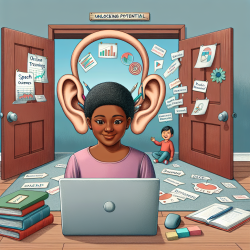Introduction
The COVID-19 pandemic has brought unprecedented challenges to educational systems worldwide. As schools transitioned to remote learning, the impact on students' sleep patterns and screen time became a significant area of concern. The research article titled "Parental survey of the sleep patterns and screen time in US school children during the first 6 months of the COVID-19 pandemic" provides valuable insights into these changes. This blog aims to help practitioners improve their skills by implementing the outcomes of this research or encouraging further exploration.
Understanding the Research Findings
The study conducted a cross-sectional anonymous online survey of parents with children aged 5-13 years. It compared sleep duration, screen exposure, and sleep quality before the pandemic, during school closures, and when schools reopened in fall 2020. Key findings include:
- During lockdown, children slept an average of 25 minutes more due to later wake times.
- Despite increased sleep, sleep quality worsened, with habits such as bedtime refusal becoming more prevalent.
- Screen time increased significantly, with 96% of children in private schools experiencing more than four hours of daily screen exposure.
- Less screen time was associated with better sleep quality.
Implementing Research Outcomes
Practitioners can leverage these findings to enhance their approach to supporting students' well-being. Here are some strategies to consider:
- Promote Healthy Sleep Habits: Educate parents and students about the importance of consistent sleep schedules. Encourage setting regular bedtimes and wake times, even during remote learning periods.
- Screen Time Management: Advocate for balanced screen time, emphasizing breaks and offline activities. Highlight the connection between reduced screen time and improved sleep quality.
- Collaborative Efforts: Work with schools to implement policies that prioritize student well-being, such as later school start times and reduced homework loads.
Encouraging Further Research
While this study provides valuable insights, it also highlights the need for ongoing research. Practitioners are encouraged to explore the following areas:
- Longitudinal Studies: Conduct studies that track sleep patterns and screen time over extended periods to understand long-term effects.
- Impact of Hybrid Learning Models: Investigate how different educational formats affect students' sleep and overall well-being.
- Intervention Strategies: Develop and test interventions aimed at improving sleep quality and reducing screen time among school-aged children.
Conclusion
The research on sleep patterns and screen time during the pandemic offers critical insights for practitioners working with school-aged children. By implementing the outcomes of this research and encouraging further exploration, we can better support students' well-being and academic success. To read the original research paper, please follow this link: Parental survey of the sleep patterns and screen time in US school children during the first 6 months of the COVID-19 pandemic.










